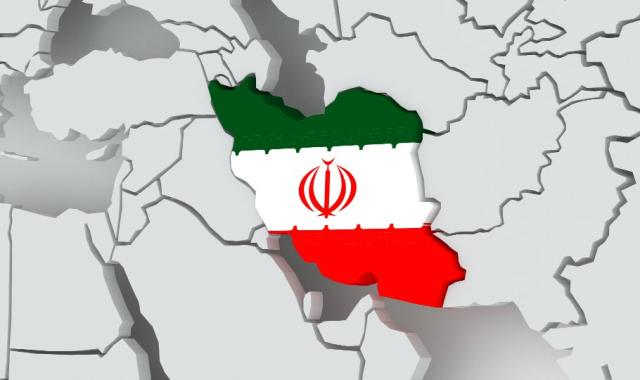
An Iranian riddle. No, not like the famous Churchill quote describing Russia as “a riddle wrapped in a mystery inside an enigma.” Rather, an observation directed more at the Obama administration’s two-year-long effort to strike a nuclear deal with Iran, a widely documented supporter of terrorism, in the face of much skepticism domestically and from many of our traditional Middle East allies.
But politics aside, there remains a riddle for the global oil and gas industry: How sharply will lifting sanctions—assuming measures are taken—impact the demand/ supply equation and world crude market sentiment in a more free market framework following the Thanksgiving OPEC meeting last year? Viewpoints were varied at press time, as nuclear negotiations extended into early July, once again passing the “deadline” for talks of June 30.
The status of the Iranian energy industry is not well publicized, so estimates of rising exports from Iran—and the timing of such exports—are diverse.
A Morgan Stanley survey of investors noted the largest group of respondents to a poll, making up 20%, thought incremental exports from Iran would come to about 200,000 barrels per day (bbl/d) by the end of 2015. Combined, the two largest groups, accounting for 39% of respondents, thought the increase in exports would be in the range of 200,000 to 300,000 bbl/d.
For 2016, the single-largest group, 21% of respondents, believed the increase in exports by year-end would be about 500,000 bbl/d. The two largest groups of respondents, making up 37%, believed the increase in exports would be 500,000 to 600,000 bbl/d.
But forecasts of rising exports span a wide spectrum—and a wide timeline, too. On the low side, Wood Mackenzie projected a rise of 120,000 bbl/d by the end of 2015, rising to 450,000 bbl/d by the end of 2016. FBR Capital Markets forecast an increase of 300,000 to 500,000 bbl/d, but likely not starting until next spring. Jefferies has a similar estimate, beginning in the first quarter of 2015. Credit Suisse’s assumptions are among the more aggressive, projecting a rise of 500,000 bbl/d as early as October of this year.
Why such variance?
In part, views differ on the time needed for Iran to certify compliance, which may depend in turn on the deal’s course of review through Congress. If a final agreement was not reached by July 9, then on July 10 the congressional review period would be extended from 30 to 60 days, taking the review period into September. After the review there would be a floor vote and the possibility thereafter of a presidential veto followed by a congressional override.
As a result, a nuclear deal struck in July may not be finalized until October, noted FBR analyst Benjamin Salisbury. And, separately, as long as the possibility of congressional disapproval is hanging over the deal, he noted, Iran would probably not begin dismantling its centrifuges as part of the nuclear deal. FBR estimated work then needed for Iran to certify compliance would take three to nine months.
RBC Capital Markets estimated that from the time a deal is struck it would take roughly six to eight months “before barrels return in a meaningful quantity, making it largely a 2016 story.” It cited statements by administration officials that sanctions would be rolled back only after inspectors have verified that Iran has taken all necessary steps to comply with an agreement.
We can only hope!
Of course, the market talk in the interim is all about more barrels coming onto an already well-supplied market, which is largely true.
But while markets do anticipate forward supply, the broad spectrum of estimates and timing of potential incremental Iranian oil supply reflect a market that is by no means easy to gauge. Much talk centers on Iran’s 30- to 40 million bbl of floating storage, but almost all of this is made up of condensates from South Pars Field, according to Credit Suisse. And what if part of the impending Iranian supply is already being absorbed by the market as part of up to 300,000 bbl/d reportedly being exported by Iran through southern Iraq?
Potential buyers of new volumes are in Asian markets—China, India and Korea—and in Europe.
The expected crude price is no more than $60/bbl, and Iran is not inclined to engage Saudi Arabia in “a bitter price war it cannot win,” said Credit Suisse. “The impact to oil markets is manageable, as long as Libya does not return to full swing.”
And if Libya does return?
Well, that’s another riddle.
Recommended Reading
For Sale, Again: Oily Northern Midland’s HighPeak Energy
2024-03-08 - The E&P is looking to hitch a ride on heated, renewed Permian Basin M&A.
E&P Highlights: Feb. 26, 2024
2024-02-26 - Here’s a roundup of the latest E&P headlines, including interest in some projects changing hands and new contract awards.
Gibson, SOGDC to Develop Oil, Gas Facilities at Industrial Park in Malaysia
2024-02-14 - Sabah Oil & Gas Development Corp. says its collaboration with Gibson Shipbrokers will unlock energy availability for domestic and international markets.
E&P Highlights: Feb. 16, 2024
2024-02-19 - From the mobile offshore production unit arriving at the Nong Yao Field offshore Thailand to approval for the Castorone vessel to resume operations, below is a compilation of the latest headlines in the E&P space.
TotalEnergies Acquires Eagle Ford Interest, Ups Texas NatGas Production
2024-04-08 - TotalEnergies’ 20% interest in the Eagle Ford’s Dorado Field will increase its natural gas production in Texas by 50 MMcf/d in 2024.





